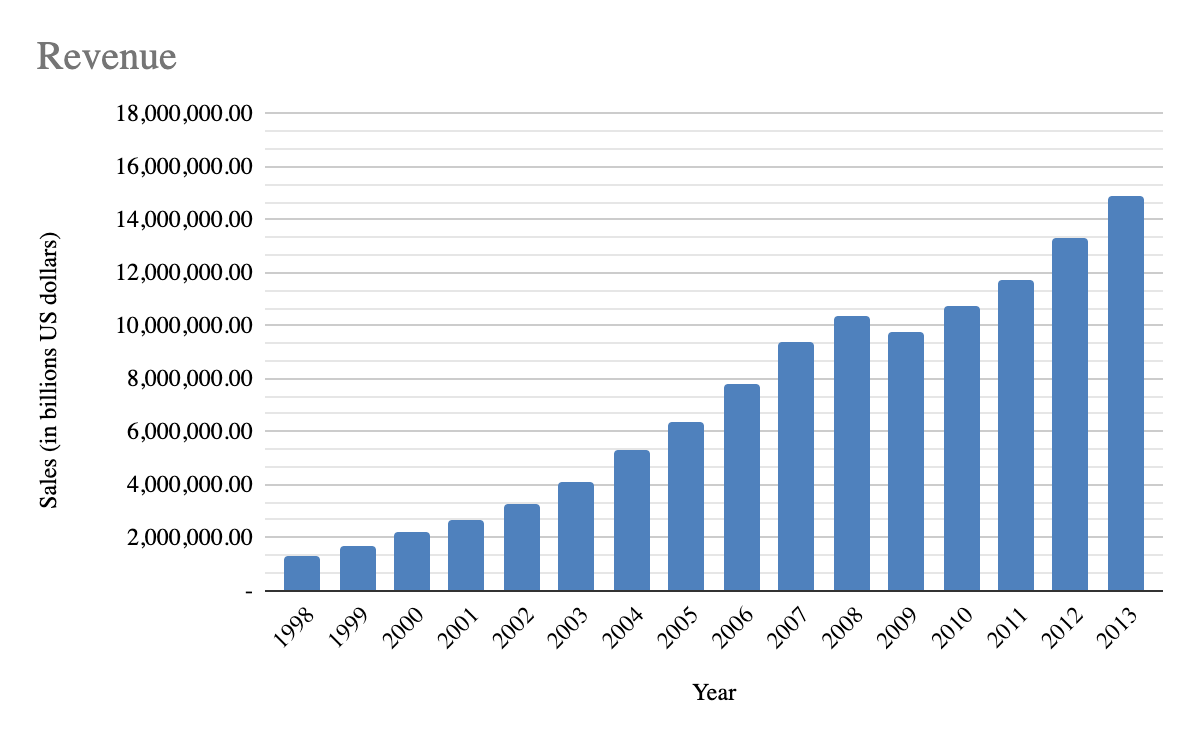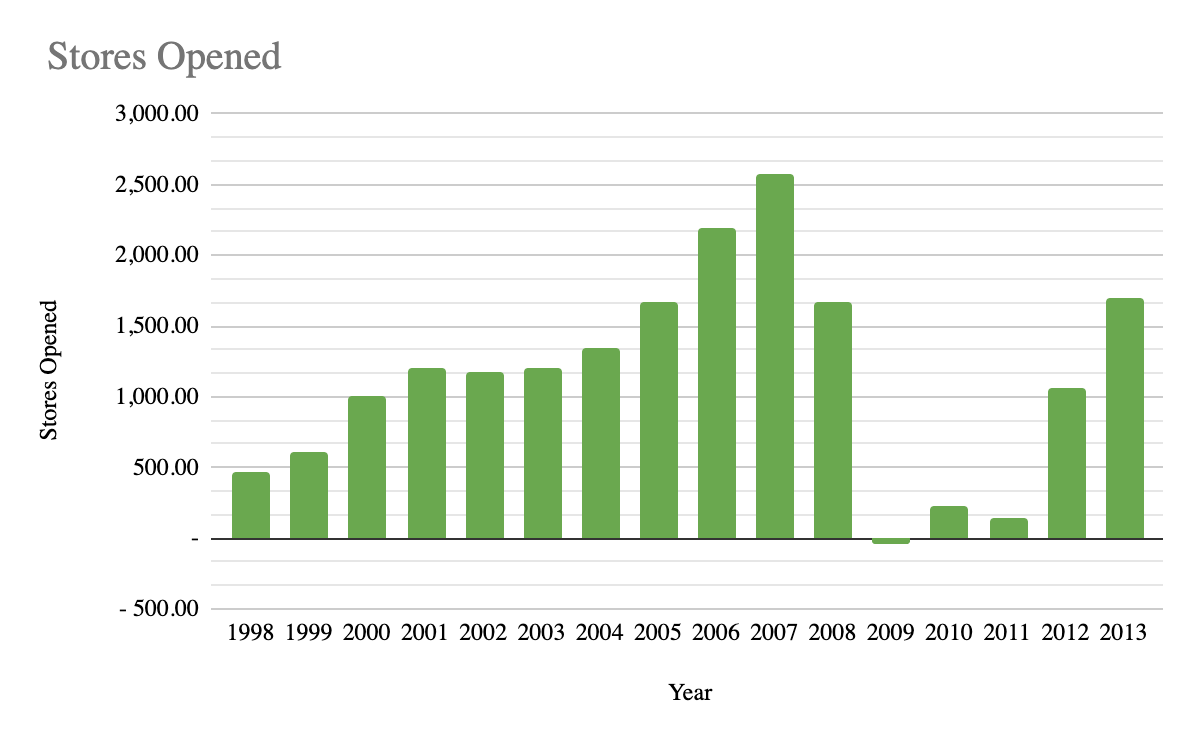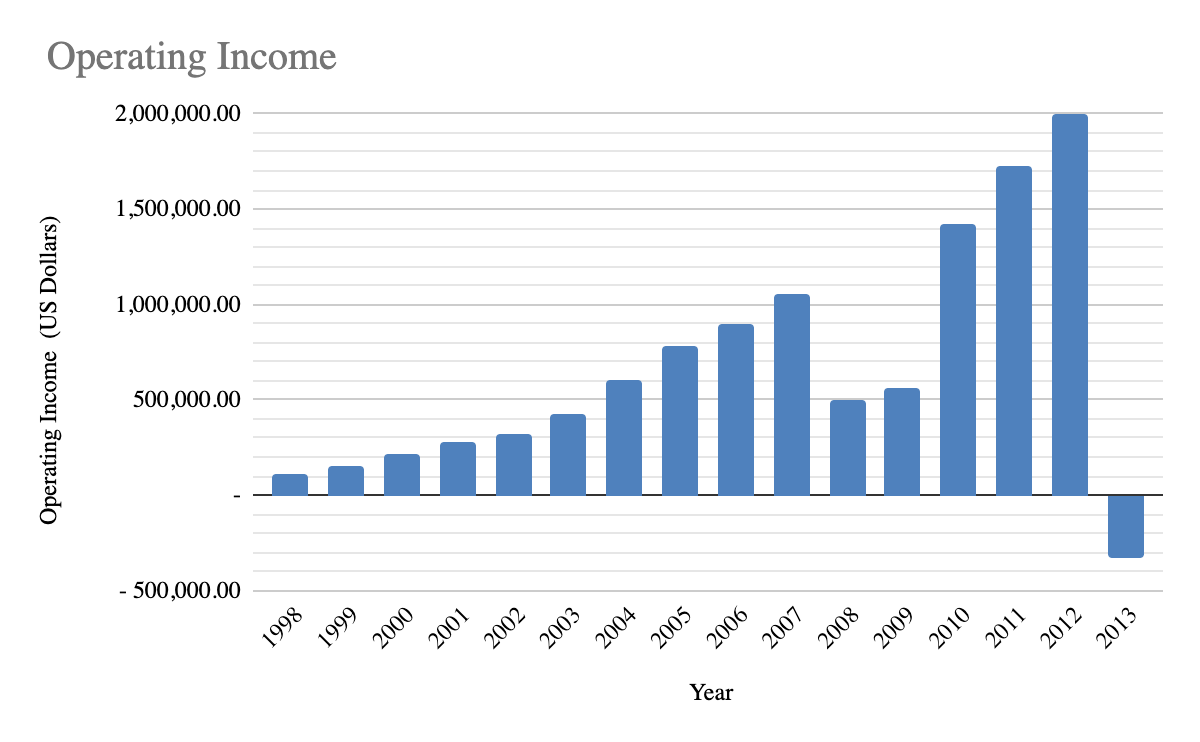Introduction
Starbucks Corporation is the largest coffee shop chain in the world. There are more than 19 thousand coffee shops in 60 countries. The organization represents a single set of interrelated elements and unity with the environment. Like any other company, it is characterized by purposeful functioning and development. Responsibility for the activity is fully assigned to the founders of this enterprise. The purpose of this paper is to use the methods of strategic analysis to study the Starbucks Corporation as a single system and to study it using appropriate methods. In order to achieve this goal, it is necessary to review the general information about the company, its structure, goals, as well as market characteristics.
History
The company started as a simple coffee shop in Seattle in 1971, but Starbucks, we know it today, was created when Howard Schultz, the mastermind of the Starbucks brand, took control of the company in 1989 (Starbucks 2020). He quickly changed the direction of the business, abandoning wholesale of coffee beans, and focusing on retail sales of coffee in small cafes owned by the company itself. Currently, Starbucks not only imports and roasts special varieties of coffee beans, but it is also the largest specialty coffee retail company in the United States. Since then, Starbucks has grown to sell its products in nearly 30,000 locations around the world and has one of the most recognizable brands on Earth (Starbucks 2020).
In 1996, after a thorough study of demand and drawing up appropriate plans, Starbucks opened its cafes in Japan and Singapore and then began a systematic expansion in both Asia and Europe. Starbucks’ expansion into Europe reached its highest point in 1997 when the company bought out the UK-based Seattle Coffee Company and turned the company’s retail businesses into Starbucks coffee shops. By the end of 2000, Starbucks opened 900 cafes in 22 markets outside of North America, followed by further expansion of the company’s coffee chain. In the vicinity of London, the company opened a factory specializing in roasting and distribution of coffee beans.
Starbucks’ corporate strategic goals
- Market Position: To become a leading brand and retailer of the best coffee
- Innovation: To use the latest equipment for the production of products.
- Productivity: To increase the number of new points of sale of products; provide 100% of the highest quality products in compliance with all ethical standards
- Resources: To reduce energy consumption in company-owned coffee shops
- Profitability: To increase revenue by 10-13%, annual return per share of $ 2.06 – $ 2.15
- Management: To Increase profitability, because the effective work of the employees is also one of the goals of the organization.
- Staff: To increase the level of motivation of employees.
- Social responsibility: To increase the share investment in charity by 10% (1 year)
Thus, one of the most important goals of the company is not only to occupy a niche in the global market but also to take care of its customers. “Starbucks’ retail expansion strategy is to increase its market share in existing markets and open stores in new markets where it believes it can become the leading specialty coffee retailer. To a lesser extent, the company will continue to expand its specialty sales and direct mail business, and will selectively pursue other distribution channels.” (Morris 2006, p. 15). The main goal of the corporation is to always maintain Starbucks as one of the most famous and respected brands in the world. To achieve these goals, the corporation continues its disciplined expansion of the total number of stores in the world in such markets as the United States, Europe, Asia, as well as optimizing the combination of its own management and licensed stores in each market.
Business model
What is surprising is that the company almost never spent money on advertising and marketing. The company owes its success to an exceptionally successful business model, which takes into account the psychology of modern people very accurately. “Starbucks continues to promote a highly friendly and interactive relationship with its customers; by launching the MyStarbucksidea.com website (2013) they show that the level of relationship formed with the customer is at the partnership level.” (Haskova 2015, p.22).
The principle of Starbucks marketing is to invent a new way to do what people have been doing for years and focus their business on customers. From the very beginning, Starbucks aspired to be more than just a coffee shop, offering its clients a lifestyle. According to the annual reports, Starbucks makes most of its money, 91%, by selling coffee and other products at locations.
The remaining 9% comes from a range of other sources of income, of which the most significant share is in the sale of ready-to-drink beverages through different channels. Besides, this corporation sells products at additional licensed stores, but these locations have much lower gross margins and generate only about 10% of the company’s revenue. In these places, Starbucks sells food, coffee, tea, and various coffee-related equipment under resale licenses. To ensure proper communication of its brand in all areas, Starbucks requires that staff members of its licensed stores also attend the company’s training sessions.
Starbucks’ revenue depends on its ability to produce high-quality coffee at low prices. 74% of Starbucks’ retail sales are made up of beverages, mostly based on coffee. Starbucks buys green coffee beans in various coffee-producing regions of the world, such as Brazil, Vietnam, and Colombia (Starbucks 2020). Then it roasts, packs the coffee beans, and distributes them itself; Starbucks buys most of its green coffee with fixed-cost commitments, in which prices are fixed before the date of delivery.

Financial Overview


Net revenues increased 34% to $1.3 billion for fiscal 1998, in comparison with $975 million for fiscal 1997 (Starbucks corporation fiscal 2001 annual report 2001). During fiscal 1998, the company opened 357 stores in continental North America and 37 stores in the United Kingdom. By fiscal year-end, there were 1,622 Company-operated stores in continental North America and 66 in the United Kingdom. The corporation’s net revenues increased 22% from $2.2 billion in fiscal 2000 to $2.6 billion in fiscal 2001, primarily due to the company’s store expansion program and comparable store sales increases.
By the end of 2000, Starbucks had opened 900 cafes in 22 markets outside of North America, followed by further expansion of the company’s coffee chain. In the vicinity of London, the company opened a company specializing in roasting and distribution of coffee beans. Since Starbucks is a highly trusted company in the market, it is critical for it to remain attractive to investors. Price increases are necessary to improve the company’s financial performance. Only by increasing profitability in the main markets will Starbucks be able to continue its ongoing expansion abroad. As part of its expansion strategy of clustering stores in existing markets, Starbucks has experienced a certain level of cannibalization of sales of existing stores by new stores as store concentration has increased.
In 2003, Starbucks reached a total of 34 international markets by entering four new markets: Southern China, Chile, Peru, and Turkey. During this year, net revenues increased by 23.9% to $4.1 billion from $3.3 billion for the previous period in fiscal 2002 (Starbucks corporation fiscal 2004 annual report 2004). Operating income grew 34.3% to $424.7 million in 2003, from $316.3 million in 2002.
In 2007, net revenues grew 21% to $9.4 billion. Company-operated retail revenues in fiscal 2007 rose 21% to $8.0 billion, predominantly due to the opening of 1,342 stores and comparable-store sales growth of 5%. The significant rise in comparable-store sales was because of the 4% increase in the average value per transaction and 1% growth in the number of customer transactions. Starbucks opened 2,571 new stores during the year, with 70% in the U.S. and 30% in International markets, to end the year with over 15,000 stores.
Starbucks was one of the first American companies to feel the recession. This happened back in July 2008, when the most famous coffee chain in the world suspended its development. Starbucks suffered losses for the first time since it listed its shares on the stock exchange in 1992. The company’s net loss in the third quarter of 2008 was $ 6.7 million (Starbucks corporation fiscal 2009 annual report, 2009). A year earlier, the coffee chain earned $ 158.3 million in the third quarter. In 2009, due to the economic crisis, the company’s total net revenues decreased by 1.6 percent to $9.774.6. Starbucks’ revenue dramatically declined because of two reasons: firstly, there were objectively fewer customers, and secondly, existing customers of the company began to spend less money. During this period, Starbucks took several measures that were intended to reduce the rate of decline in the company’s revenue. In particular, Howard Schultz actively closed numerous stores that had previously opened in large numbers.
Starbucks again experienced an increase in revenues in the third quarter of the fiscal year 2010, and revenues increased to a record of $10.7 billion (Starbucks corporation fiscal 2010 annual report 2010). Operating income increased by $857 million from fiscal 2009 to $1.4 billion. In fiscal 2012, Starbucks consolidated global revenues reached a record of $13.3 billion, a 14 percent increase (Starbucks corporation fiscal 2013 annual report 2013). Their operating income was $2 billion, a 16 percent increase, with their consolidated operating margin rising to 15 percent, up 20 basis points from 2011. The company’s revenue shows stable growth with moderate maintenance of operating income. For instance, revenue in 2013 was $ 14.9 billion, a 12 percent increase over last year, of which $ 1.9 billion was operating income.
Conclusion
One of the most important components of Starbucks’ success is a properly conceived and implemented strategy. Starbucks Corporation has grown from a small, regional business to an undisputed global leader in the coffee industry in a relatively short amount of time. The key to economic growth lies not only in low-cost prices but also in the additional advantages of the company – in innovation, design, and architecture, pure, intangible, and exciting brand fashion.
Reference List
Haskova, K. 2015. Starbucks marketing analysis. Web.
Morris, T. 2006. Understanding Starbucks. Web.
Starbucks. 2020. Starbucks Coffee Company, Seattle, WA. Web.
Starbucks corporation fiscal 2001. annual report 2001. Web.
Starbucks corporation fiscal 2004. annual report 2004. Web.
Starbucks corporation fiscal 2009. annual report 2009. Web.
Starbucks corporation fiscal 2010. annual report 2010. Web.
